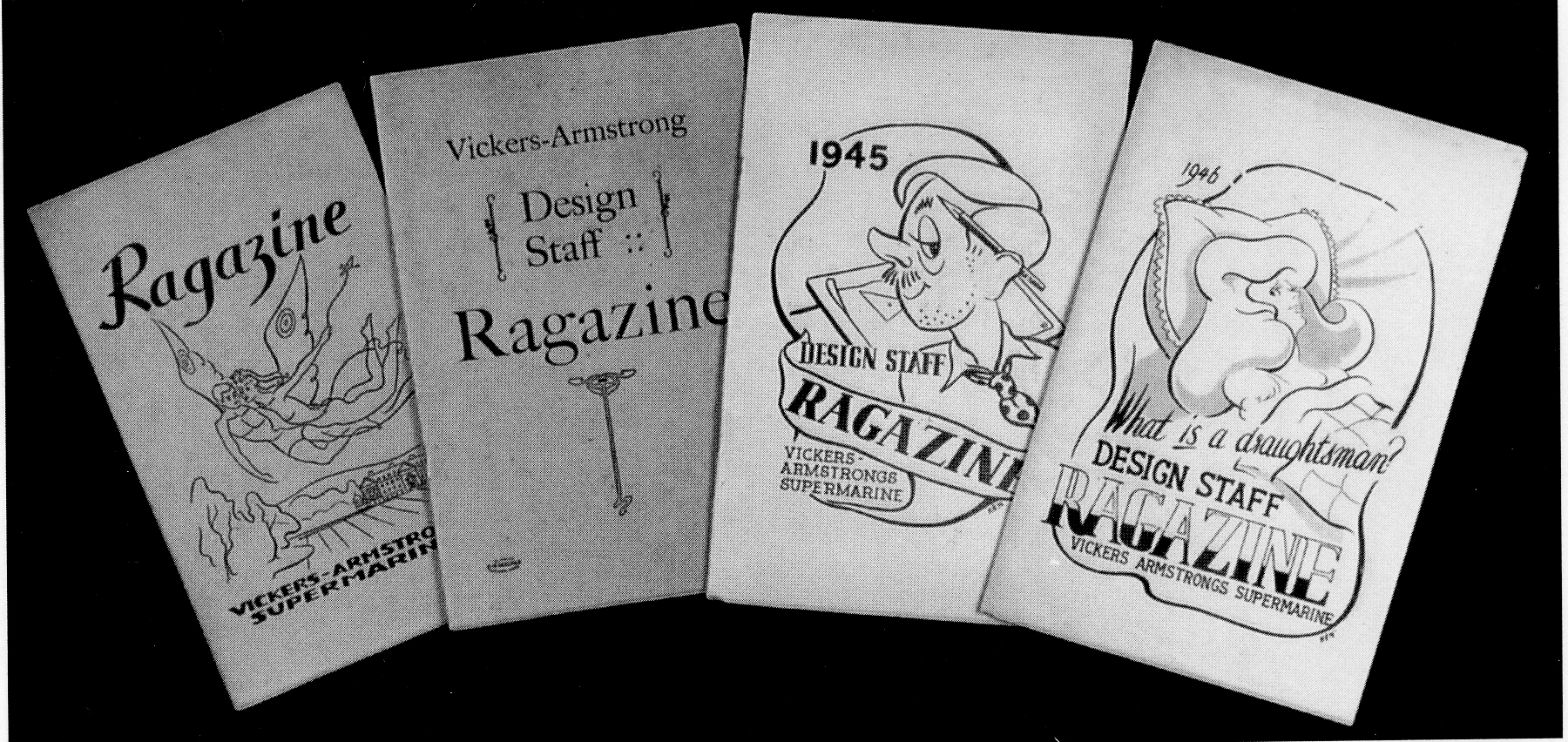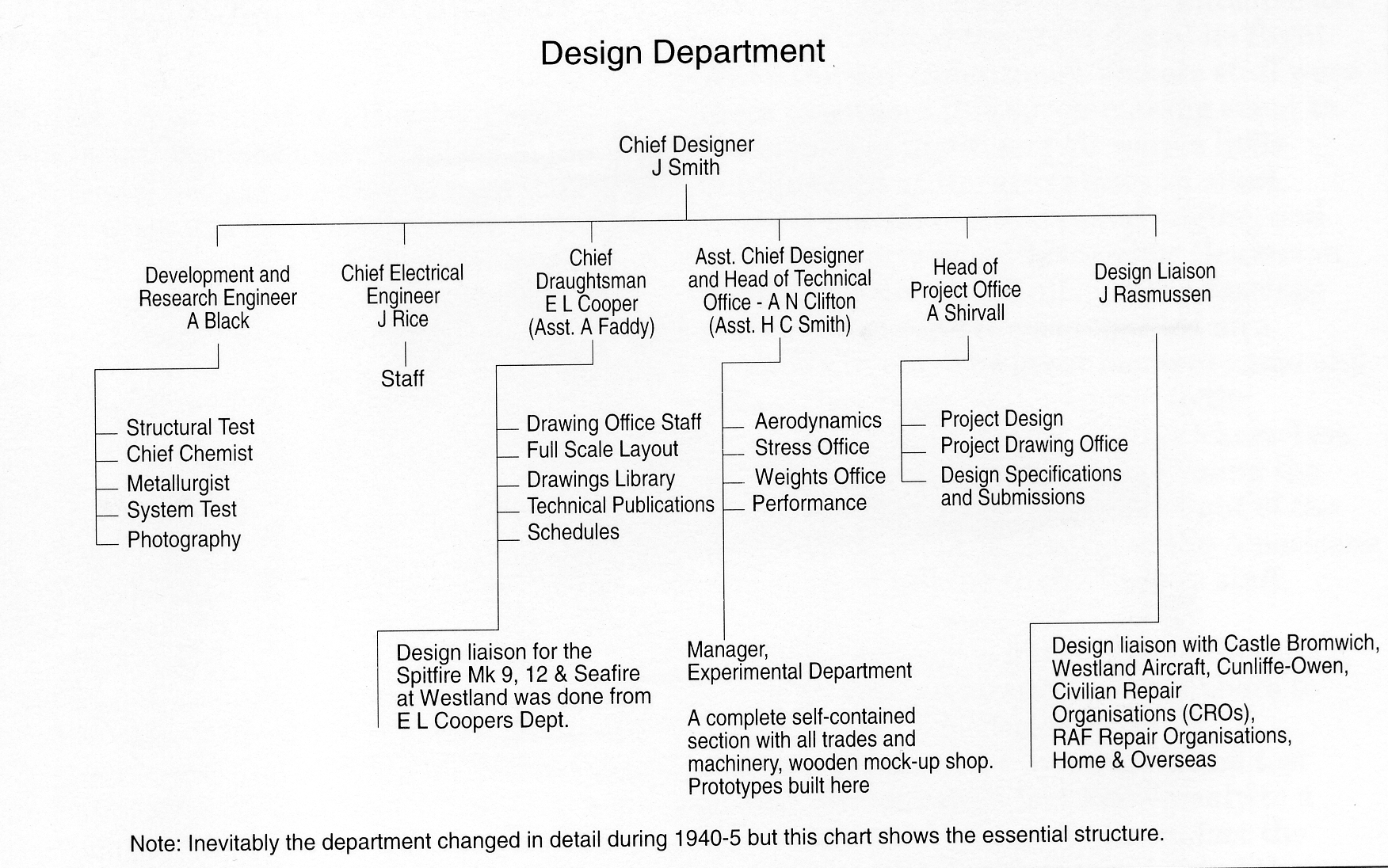Reminiscences, the Source of Legends
Did a Spitfire ever fly from Hursley Park? Legend has it that one was assembled in the experimental hangar and took off from the Park. The only place this could possibly have been was the site of the First World War aerodrome, on the high ground above Pitt, not as some assumed from the meadows south west of Hursley School, but Jeffrey Quill the test pilot considers this pure fantasy, as the chances of a safe take—off from both sites would have been reduced and the risk not justified, especially with the school being so close. It is possible that the story emanated from the fact that all aircraft built at Hursley did a low fly—past for the work-force, who were given time off outside to view the spectacle. All new aircraft were initially anchored to the ground at the back of the hangar, for Rolls Royce engineers to run the engines up to test that all was well, before they were transported to an airfield. Small US. Army aeroplanes, already mentioned, did take off and land in the Park during the war years. Small planes, and the very light, flimsy, ‘kites’ of the First World War period could safely manage in the confined and generally soft conditions, but the Spitfire required a much longer and firmer runway.
Vickers used aerodromes at Chilbolton, High Post, near Salisbury, and Worthy Down for testing. One day at High Post, the Americans brought an aircraft there for testing, and the secrecy surrounding it had to be seen to be believed, with the aircraft completely covered and surrounded by armed ‘Snowdrops’, (military police in white helmets). The Americans informed the bemused Vickers staff that this aircraft would show what flying was all about, and so with eager anticipation everyone awaited the great day of its flight. When the day came, many Vickers staff were there to witness this epoch-making event in the history of flight, and all were a little unimpressed as the aircraft was a short, thickset machine with a radial engine, and was apparently manufactured by Grumman. Snap rivets protruded all over the fuselage and on the ground it was regarded as a disappointment. The great moment came and the machine took off. Unknown to the Americans, so did Jeffrey Quill, Vickers Test Pilot in a Spitfire. He ‘ran rings’ round the Yankee machine, much to the delight of the Vickers folk, and the chagrin of the Americans who stopped talking to the Vickers staff.
There is, however, a punch line to this story, as the Grumman aircraft was not there to demonstrate its performance or manoeuvrability, but to evaluate and test certain equipment, a fact known only to a selected few at Vickers. It was in fact the Snowdrops who ‘laughed last’ behind their batons, for having successfully acted out the Charade!
One incident which is humorous now, concerned the unofficial ‘cottage industry’ based in the experimental hangar making cigarette lighters and, later, television tables. To everyone’s astonishment, police officers appeared on the scene to investigate. The awful crime was not making the lighters, or using valuable materials, but that no excise duty had been paid on the completed smoking accessory. So not for the first time, enterprise was stifled by red-taped bureaucracy. Another crime came to light one evening when the night shift turned up, only to be told to report direct to the canteen before starting work. They were faced by the homburg-hatted Mr Wakeling and plain-clothed policemen, who told them that someone had stolen a bearing race, and if that person ‘owned up’, it would be better for him. No one said a word, so they were told to stand by their benches, and a search would be made of all tool boxes and drawers. The first bench searched had the offending bearing in the drawer (they had obviously been searched earlier) and, unfortunately for the culprit, two more were found at his home in the garden well. The bearings were not new, but salvaged from damaged aircraft, and for this he received six months in prison. What would be the penalty today?
 ‘Ragazine’ - Vickers Supermarine staff magazine
‘Ragazine’ - Vickers Supermarine staff magazine
Also remembered by these daytime visitors is the welcome given by the villagers, whose quiet lives must have been impacted, although not so thoroughly disrupted as when the American troops ‘came to town’ by the hundreds. Then the Village seemed to be awash with them from the camp around the Merdon Castle part of the Park.
On the social front, there was a design staff magazine called ‘Ragazine’ of which very few seem to have survived. One of the highlights of the Hursley design activities was the annual design staff dinner organised by Bill Cox, and assisted ably by the local comic, George Wherley. Through canteen manager Reg Turley’s skill, food and refreshments were somehow obtained; the ways and means of which should not be investigated too closely. This event was supported by Joe Smith and Wilf Elliott, who were more often than not the butt of the memorable sketches which followed the dinner. To their credit all the sketches were received with good humour.
Looking back now fifty years on, all the Vickers staff who have been contacted enjoyed their stay at Hursley Park. The gardens were a quiet place to watch and hear the birds while eating a sandwich lunch, and after the many air raids and alarms at Southampton it was restful by contrast. Even though the bus rides to town were exhausting, they are remembered with humour, and are mentioned in most reminiscences that have been shared.
The accompanying structure gives an interesting look at the organisation during the 1940 to 1945 period. The photographs are from material lodged in Cambridge University Library, and reproduced with the kind permission of Mr H E Scrope who was the company photographer based at Vickers House in London. The Hursley Photographer’s name was Mr C D Burr, who was at Hursley until the move to Swindon, when he retired.
